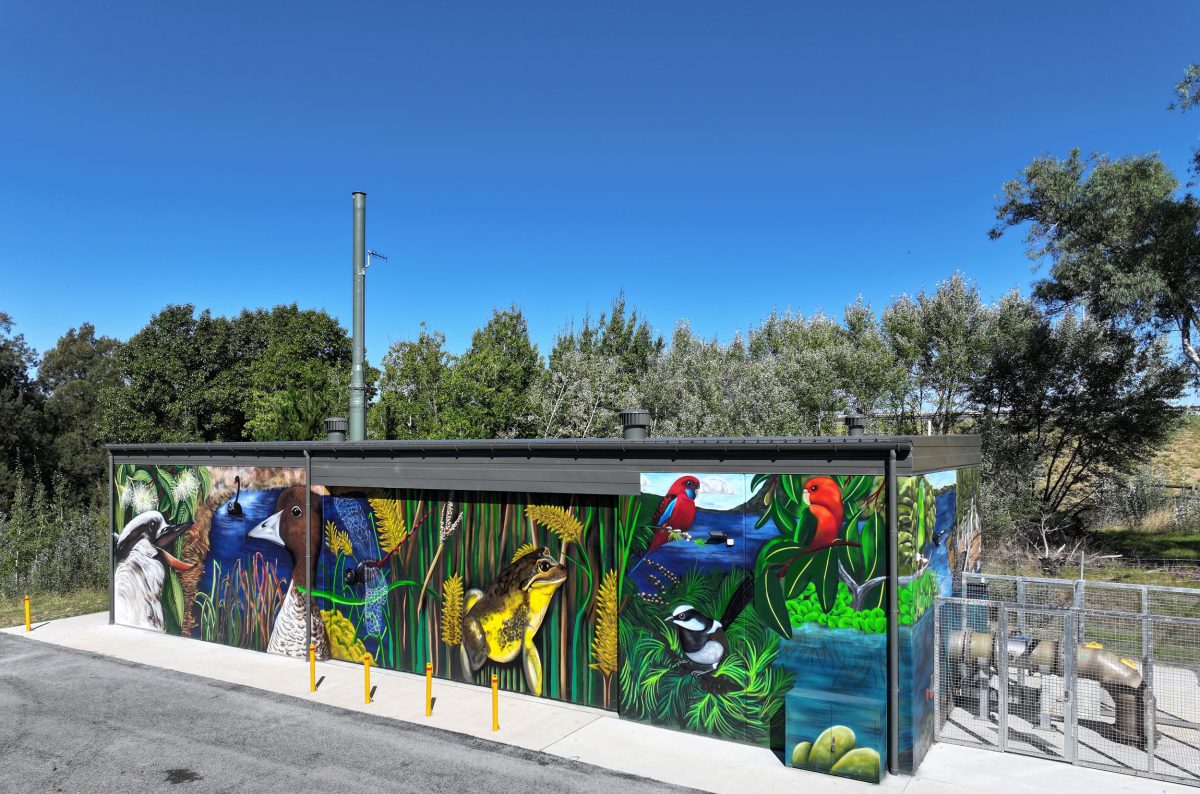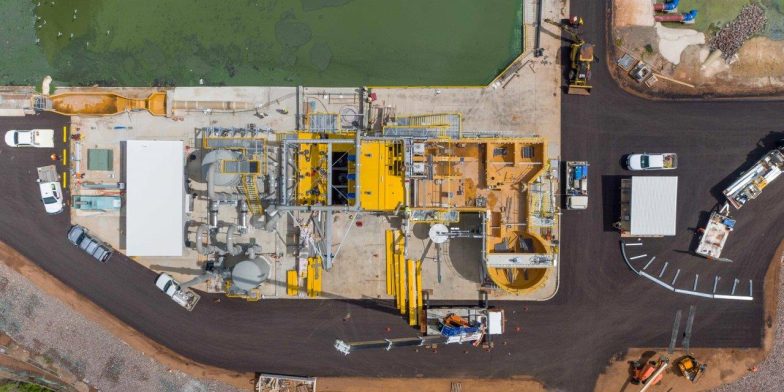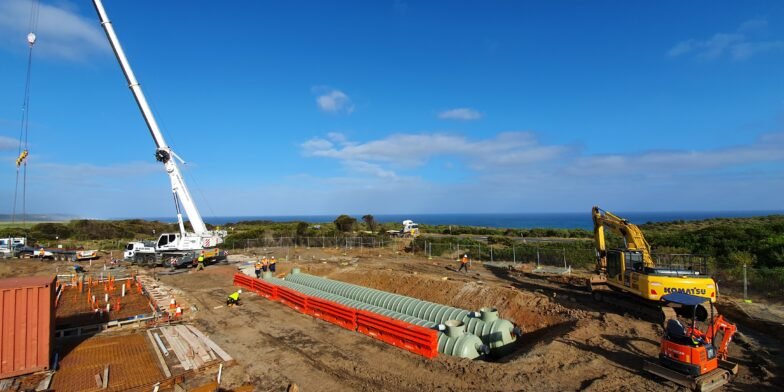In the Australian water industry, activated carbon units (ACUs) are the primary method for odour control, but they pose significant hazards during media replacement. The most effective way to manage these risks is through hazard elimination. Our innovative ACU design addresses the hazards typically associated with carbon replacement.
The Belconnen Trunk Sewer (BTS), built in the 1960s, serves the Belconnen, Gungahlin, and Hall catchments, transporting sewage to the Lower Molonglo Water Quality Control Centre. While initially designed with natural and limited fan-forced ventilation to manage internal corrosion, evolving regulations and increasing urban development have heightened community expectations for odour management.
Traditional ACU maintenance poses serious safety risks, requiring workers to enter confined spaces, do manual handling, and operate at heights near suspended loads — all while exposed to dust, noise, and biohazards.
To eliminate these risks, the project introduced rectangular stainless-steel cassettes for the carbon media, allowing safe removal via forklift. Each cassette is accessible through a sliding door and transported to a central depot for media replacement. This innovation removes the need for confined space entry, working at heights, suspended loads, and manual handling, drastically improving worker safety while ensuring faster, more efficient maintenance with minimal exposure to biohazardous conditions.
By eliminating the need for vacuum extraction and crane operations, onsite work is reduced from days to hours, minimising disruption to local neighbourhoods and enhancing public safety by reducing truck movements, noise, dust, and odours during the replacement process.
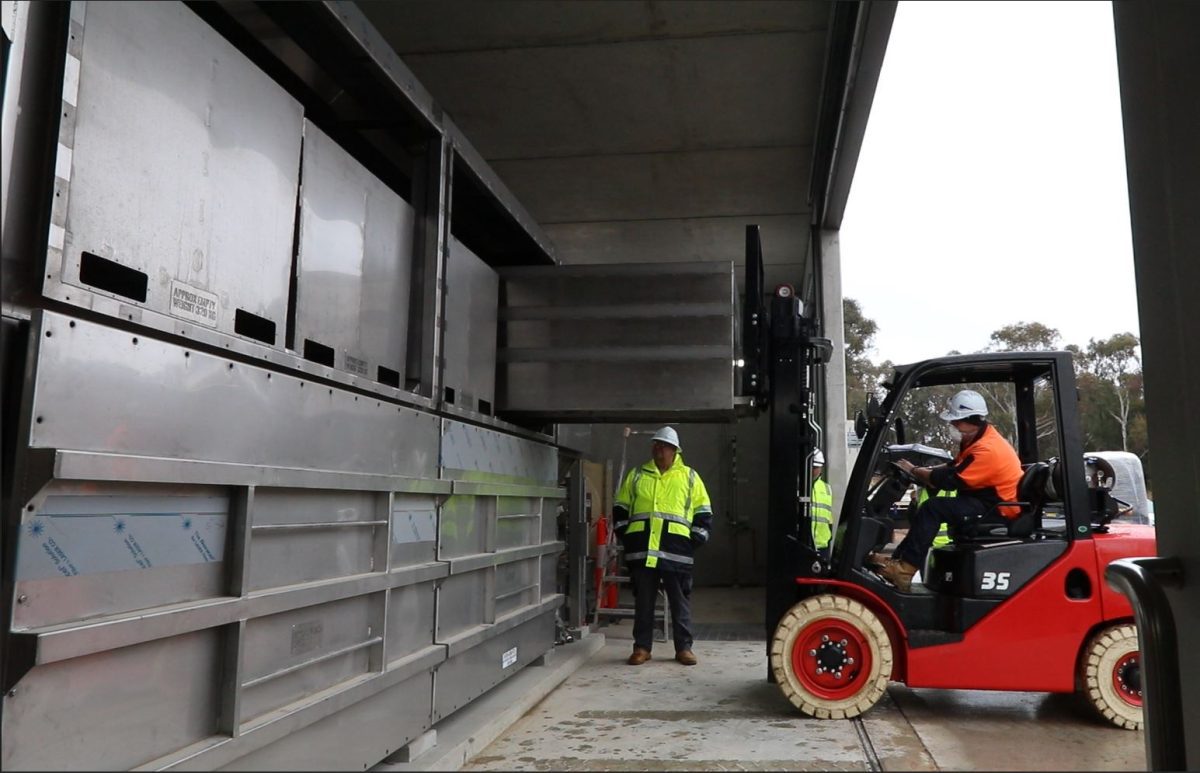

“This project is a great example of collaboration between Aquatec and Icon Water and represents a big improvement in the way that we manage our activated carbon odour control facilities.”
— Tim Brake, Networks Program Manager, Infrastructure Delivery – Icon Water
Establishing the root cause and developing the solution
Aquatec and Icon Water engaged in numerous design and review cycles to refine the concept, incorporating feedback from maintenance crews. Key considerations, such as the cassettes’ weights and dimensions, were optimised for easy transport. Forklift studies assessed turning radius and load-bearing capacity for safe lifting and movement. CFD modelling also confirmed balanced airflow across all the cassettes within the ACU.
A full-sized mock-up allowed operators to test the cassette replacement process physically, uncovering additional improvement opportunities. These included relocating tong positions for better visibility, adding self-locating features for the bins, and installing back and roof stoppers to prevent forklift contact with the ACU structure. The cassette design was further refined, adding strength and a tapered shape to allow the carbon media to fall out when the bins are turned upside down.
During this thorough trial and iterative development process, the design was optimised for operational efficiency and safety, ensuring a seamless and safer maintenance process.
In the hierarchy of control, the highest and most effective way to manage these risks is through hazard elimination. This innovative ACU design eliminates the hazards typically associated with carbon replacement:
- Confined Space Entry: Eliminates the need for personnel to enter vessels, reducing exposure to potentially hazardous atmospheres (such as H2S, carbon dust, and low oxygen).
- Biohazard Exposure: Protects maintenance crews from exposure to and handling biohazardous end-of-life media in place. Handling of biohazardous end-of-life media and maintenance of the cartridges can be performed in a controlled environment at an off-site, purpose-built facility.
- Noise Exposure: This reduces high noise levels by eliminating the need to vacuum spent carbon out of the ACU.
- Manual Handling: All movements are conducted using a forklift, minimising manual lifting.
- Working at Heights: Removes the requirement for operators to tip new media into the top of the vessel. Thus, all maintenance operations are performed at ground level.
- Suspended Loads: Avoids risks associated with craning media bulk bags over the vessel to drop new media into the top of the vessel.
- Trips, Slips, and Falls: Preventing carbon media spills during the replacement process reduces the risk of slips and falls while working around and maintaining these units.
Key technical details and figures
- Interchangeable, removable media cassette simplifying maintenance and improving operator safety
- Four sites along the Belconnen Trunk sewer (BTS) main
- Airflows: range between 5,400 m3/hr – 6,480 m3/hr
- Hydrogen Sulphide (H2S) loading: average 2ppm
- Consistently specified cassettes are being used at four additional sites
- Outlet requirement guarantee:
- 99% removal of H2S
- 95% odour removal or outlet concentration levels < 300 OU
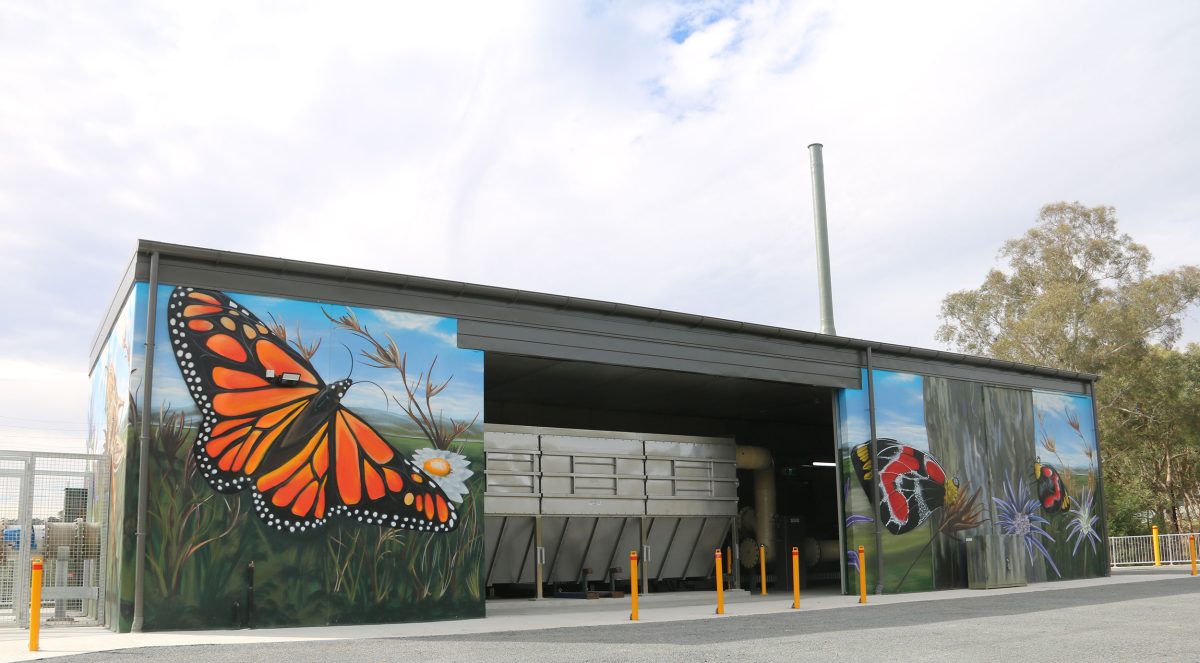

It has been great working on the technical aspects of the project alongside the project team and Aquatec to navigate the technical challenges. It is rewarding to see how these improvements have enhanced safety and outcomes for the community. Looking forward to carrying this approach into future projects.
— Sol Asadollahi, Technical Director – Icon Water
Transforming wastewater infrastructure through community engagement and art
Icon Water consulted the local community about the visual amenity of the ACU buildings. Based on this feedback, local artist Geoff Filmer painted the buildings with designs featuring local flora and fauna, enhancing the aesthetic for residents and visitors alike.
Diona engaged with students from the Miles Franklin Primary School to help design Evatt’s mural. The mural focused on the water cycle theme to align with the students’ curriculum. Watch a short video of the mural coming together, courtesy of Diona and Icon Water.
All four ACUs can now be found on numerous public art and silo-art trail websites, encouraging visitors to the area.
